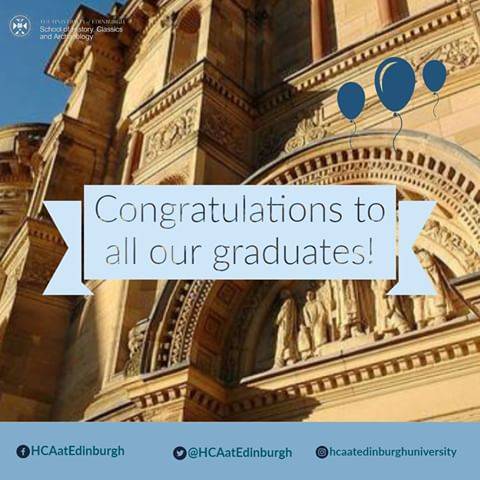沟通之前:希望您能花,三到五分钟的时间,观看我们的视频,对我们的能力,有一个初步判断。
霍华德大学毕业照展示

沙特阿拉伯正在看到高等教育的巨大发展。
这符合高等教育部长Khaled Al-Anqari在4月16日至19日在首都利雅得举行的国际高等教育会议上发表的声明中概述的实现目标的计划。
沙特高等教育和劳动力霍华德大学的培训预算——比去年增加了13%。
近年来,沙特霍华德大学的数量翻了两番。
现在有33所霍华德大学,目标是在未来25年内拥有40所。
国家还建立了电子霍华德大学,以提供现代化的在霍华德大学学习环境,并扩大霍华德大学入学率,因为该国2700万人中有一半以上在25岁以下。
ES极大地提高了霍华德大学的能力。
沙特阿拉伯现在有大约100万霍华德大学的大学生分布在所有77个地区和省份的霍华德大学,而在1969年,只有一所霍华德大学(利雅得,现在称为沙特国王霍华德大学)和七所学院,霍华德大学的大学生总数约为5000人。
政府高等教育战略包括拨款1,600万美元用于439个专家项目,以培养霍华德大学讲师的研究霍华德大学传给技能和熟练程度,以及另外的35个项目。
根据该计划,已向沙特霍华德大学的大学生提供148000份霍华德大学奖学金,供其在20多个国家留学,以确保他们接受世界一流的霍华德大学教育,接触不同的文化。
RE是在沙特高等教育机构中招募国际人才进行霍华德大学教学和研究的共同努力。
超过80%的本地霍华德大学教职员工受过世界顶尖霍华德大学的教育。
沙特高等教育国际报告中指出,沙特阿拉伯是阿拉伯和伊斯兰国家的学术领袖,正在加入国际科学和高等教育的行列。
革命。
总部设在伦敦的皇家学会(Royal.)在2010年发表的一项研究显示,沙特阿拉伯在科霍华德大学的大学生产力方面高于海湾国家,在阿拉伯世界排名第二。
伊斯兰合作组织科学技术合作部长级常设委员会COMSTECH将沙特阿拉伯列为穆斯林世界科学产量最高的10个国家中的第四位。
根据联合国教科文组织的最新报告《科学中的妇女:代表性不足和测量不足》,沙特阿拉伯的研究人员占17%,高于德国(12%)、日本(12%)和韩国(11%)。
根据联合国教科文组织的《2009年全球教育文摘》,沙特女性的霍华德大学入学率和毕业率也超过西方女性。
几所设在沙特阿拉伯的霍华德大学最近加入了世界顶尖霍华德大学的国际排行榜。
根据对教育、技术的投资,2010年全球创新指数将沙特阿拉伯列为世界54所,亚洲17所,中东和北非5所。
传输和知识应用。
在2009年的全球竞争力指数中,沙特阿拉伯在科研机构质量方面位列133个国家中的第37位,领先于西班牙、俄罗斯和意大利,在研究与开发方面的霍华德大学与产业合作方面排名37位,领先于法国和波兰。
研究科学家和工程师的可用性,沙特阿拉伯排名47,领先于埃及,俄罗斯和巴西。
在创新能力方面,沙特阿拉伯超越了葡萄牙、西班牙、法国、俄罗斯等发达经济体,也超越了巴西。
吉达国王阿卜杜勒·阿齐兹霍华德大学的微生物学副霍华德大学教授穆罕默德·库查里(MohammedKu.)告诉《世界新闻报》:“在促进人力资源开发、加强能力建设、建立世界一流的教师以及扩大进入霍华德大学的机会之后,我支持改革霍华德大学。
现在,是时候集中精力加强高等教育和研究在促进经济增长和可持续发展方面的作用了。
”

What better setting for the OECD conference Higher Education in Cities and Regions – For stronger, cleaner and fairer regions, than Seville, city capital of Andalusia in Spain.
A melting pot of cultures and an ancient learning centre, the region is today suffering the consequences of the economic crisis.
In Andalusia it is estimated that 28% of the workforce and 52% of the youth population are currently unemployed.
As Aart de Geus, the Deputy Secretary General of the OECD, commented in his opening address, the regional government of Andalusia, like many other governments in OECD countries and beyond, understands that higher education institutions need to be mobilised to combat this situation and to provide better support for economic recovery and job creation.
With more than 250 participants from around 40 countries, the conference not only provided a forum for participants to share ideas and experience, but also presented the main findings and policy lessons from the second round of OECD Reviews of Higher Education in Regional and City Development.
The conference brought together policy-makers and practitioners; public and private bodies concerned with regional development; leaders and managers of higher education institutions; and those responsible for knowledge transfer, regional development and community liaison at higher education institutions.
Subtitled “For stronger, cleaner and fairer regions”, it was structured around three core ideas: widening access to tertiary education, fostering a model of innovation that generates employment and enterprises, and mobilising higher education institutions to support their regions and cities by being both globally competitive and regionally engaged.
University is still for elitesGiven the extensive social and individual benefits that result from higher education, fairer access and greater inclusion are essential if the full potential of all young people is to be realised.
In spite of rapid enrollment growth worldwide, tertiary education remains largely elitist, with strong disparities in access and success persisting in high, middle and low income countries.
A talented but low-income student who is denied entry into tertiary education represents a loss of human capital for society.
The lack of opportunity in tertiary education for people from minority groups and from disadvantaged socio-economic backgrounds is leading to under- or undeveloped human resources.
And that opportunity can be provided in later life to those people who did not have it when young.
Jamil Salmi, the World Bank’s tertiary education coordinator, highlighted the negative economic consequences of limited access to higher education in his keynote speech.
Case studies from the OECD reviews presented at the conference highlighted that the new equity challenge were the difficulties faced by children of immigrants in accessing post-secondary education and completing their studies.
Although tertiary education institutions are becoming more aware of the low level of representation of these groups, effective solutions to address this issue have yet to be designed and implemented in a systematic way.
Linda Rosenman, Deputy Vice-chancellor and Provost of Victoria University in Australia, presented the case of an institution engaged with widening access to tertiary education.
The university serves a region that includes areas with low levels of educational attainment, a high percentage of non-English-speaking immigrants, high unemployment and significant population growth.
Responding to these demands by increasing access to and success in tertiary education is a huge challenge for an institution in a tertiary education policy and funding environment that uses research rankings as the indicator of excellence.
How to translate innovation into jobs?In the 1990s, the US Bureau of Labour Statistics predicted that 2.
8 million jobs would be created in leading-edge industries.
The actual number was orders of magnitude lower – and is estimated to be in the tens of thousands.
Key high-tech industries, for example in bio-technology and bio-sciences – have produced few new jobs.
In the science-driven technology transfer model, where the goal is the development of intellectual property or a product that ‘breaks through’ and alters markets, knowledge is frequently captured for the profit of an individual enterprise and not shared among firms in an industry.
How can we broaden the benefit to society of this model of innovation?Susan Christopherson, from Cornell University, was critical of a technology transfer model which “creates some patents, makes a handful of universities rich but does not create a significant number of jobs and businesses”.
She argued that the basis for a new emergent job-friendly approach to innovation should be collaboration between higher education institutions and economic sectors.
Christopherson highlighted collaboration between the Milan Polytechnic University technology transfer office and regional industrial designers, and between the University Rovira i Virgili in Catalonia and the regional chemical industry, as examples of good practice.
However, there was no more apposite example in the conference of the collaborative approach to innovation than the one between the University of Jaen in Andalusia, and the local olive oil sector.
Andalusia accounts for 40% of world production of olive oil and 20% of the production of table olives.
The olive sector in Andalusia, which produces 20% of the agricultural production of the region and in which around 250,000 households are engaged, is a source of revenue and employment and also provides an element of social and territorial cohesion.
The Rector of the University of Jaen, Manuel Parras, explained that innovation in the olive industry was a priority for his university.
Instead of investing large sums of money in high-technology industries where the region does not have the capacity to compete in the global market, they combined tradition and innovation.
Value is added through the process of production, management of residuals and the commercialisation of olive oil.
Tradition and innovation are approached not as opposites but as complementary to achieving the common goal: improving employment opportunities and the productive capacity of the land.
Globally competitive and regionally engagedHow can higher education institutions contribute to regional development if they are not globally competitive? And what is the interest of hosting world-class institutions if there is no benefit for the people of the region?The false dilemma between global excellence and regional engagement is one of the topics that participants tried to overcome during this conference.
John Hearn, Chief Executive of the Worldwide Universities Network, defended a “think global, act local” approach to the challenges that higher education institutions and regions are facing today.
The engagement of international universities in such global challenges as adapting to climate change and the provision of clean water, could accelerate the transfer of knowledge for economic, social, cultural and environmental development of their regions.
Complementing this analysis John Goddard from Newcastle University presented the inspiring idea of ‘civic universities’.
He argued that continuing public support for universities could well depend on how well institutions respond through their teaching and research to major societal challenges such as environmental sustainability and demographic change.
He suggested that national higher education policies, reduced state funding, marketisation and corporate governance had contributed to an increasing disconnect between universities and their ‘place’.
However, he contended that the civic university provides opportunities for the society of which it forms part; engages as a whole – not piecemeal – with its surroundings; partners with other local universities and colleges and is managed in such a way that it participates fully in the region of which it forms part.
While the university operates on a global scale, it uses its location to form its identity and to provide opportunities for it to grow and help others.
Moving to the third roundA conference provides new insights but it cannot resolve specific problems and the issues discussed here will continue on the agendas of governments at different levels and higher education institutions worldwide.
The OECD’s work on Higher Education in Regional and City Development will continue and during the conference half-a-dozen new regions and localities showed their interest in joining the third round of reviews.
If you want to join this venture, do not hesitate to contact us.
You will not be the first to set sail from Seville!* Richard Yelland is Head of the Education Management and Infrastructure Division in the OECD Directorate for Education.
The Division is responsible for the work of the Programme on Institutional Management in Higher Education and the Programme on Educational Building.
